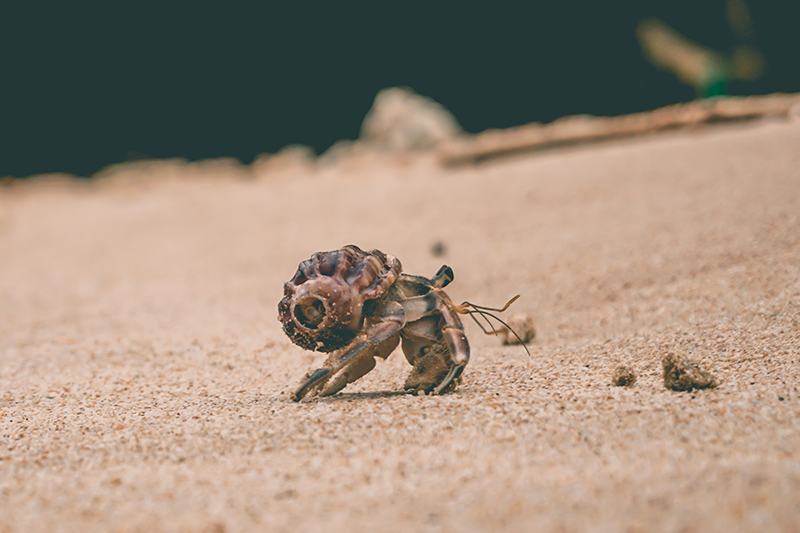Some species of hermit crabs are considered endangered, while others are not. The overall population of hermit crabs is difficult to determine, but it is known that certain species face threats from habitat destruction, over-harvesting, plastic pollution, and climate change. Human activities such as coastal development, pollution, and the pet trade can have negative impacts on hermit crab populations, leading to declines in some areas. Conservation efforts, such as habitat protection, sustainable harvesting, and public education, can help to ensure the survival of hermit crab populations.
What threats are faced by hermit crabs that may cause their extinction?
Threats to hermit crabs include:
- Habitat destruction: Coastal development, pollution and the loss of shell habitats.
- Over-harvesting: Harvesting for food, bait, and the pet trade can reduce population numbers.
- Climate change: Rising sea levels, ocean acidification and increased temperature can affect their survival and reproduction.
- Plastic pollution: Hermit crabs can mistake plastic debris for shells and become trapped or die from ingestion.
- Parasites and diseases: Parasites and diseases can also have negative impacts on hermit crab populations.
Are hermit crabs natural predators considered a threat in their population?
Hermit crabs have natural predators that can impact their populations. Some common predators include:
- Birds: Seabirds such as gulls and terns feed on hermit crabs, especially during the molting process when they are vulnerable.
- Fish: Certain species of fish, such as octopuses and starfish, feed on hermit crabs.
- Sea Otters: Sea otters are known to consume large numbers of hermit crabs.
- Other Hermit Crabs: Larger hermit crabs can prey on smaller individuals, especially during periods of shell scarcity.
It is important to note that the impact of natural predators on hermit crab populations can vary and is influenced by factors such as the abundance of prey and predator populations, as well as environmental conditions. While natural predation can have an effect on hermit crab populations, it is typically human activities, such as habitat destruction, over-harvesting, and pollution, that pose the greatest threats to their survival.
How about Humans? Are we considered a factor as a threat in Hermit Crabs’ population?
Yes, humans are a significant factor in the endangerment of some species of hermit crabs. Human activities such as coastal development, pollution, over-harvesting for food, bait and the pet trade, and the introduction of plastic debris can negatively impact hermit crab populations and lead to their decline. Climate change, caused by human emissions of greenhouse gases, is also affecting hermit crabs and their habitats.
What can we do then to protect hermit crabs and even other aqua marine species?
As individuals, we can take steps to protect hermit crabs and other aquatic species, such as:
- Reduce plastic use and properly dispose of waste to prevent plastic pollution in the oceans.
- Support conservation efforts and responsible management practices for commercial harvesting of hermit crabs and other marine species.
- Minimize coastal development and promote sustainable practices to protect coastal habitats.
- Be mindful of our impact on the environment and reduce carbon emissions to mitigate the effects of climate change on the ocean.
- Educate others about the importance of protecting hermit crabs and other aquatic species and their habitats.
- Avoid purchasing hermit crabs or other marine species from unsustainable or illegal sources.
- Support organizations and initiatives that work to protect and conserve marine ecosystems and species.
